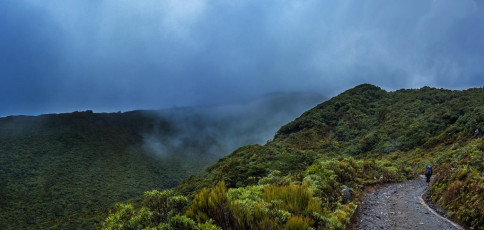
The biggest climbing challenge in these globally warming times seems to be picking the weather window. I’d been keeping an eye on the forecasts for a week or so and it looked like either Monday or Tuesday would be the best bets. The forecasts for both days were near identical. A big storm event was due to hit on Wednesday, which proved to be the case. With very thin snow and ice conditions and a snow line at about 1,550 metres on Taranaki, the avalanche risk was graded low before the storm. Post storm Taranaki and the central volcanoes were graded high, while all the south Island mountains were just moderate or considerable. So I was right about doing something before the storm at least.
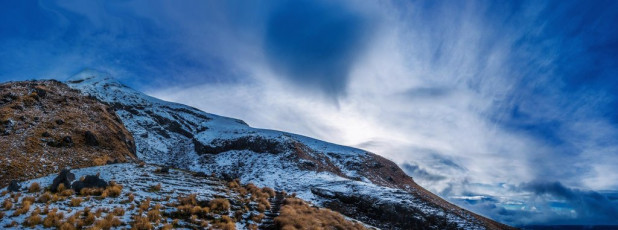
Given how much the forecasts change as the days roll by I figured I’d go for the Monday, so Sunday afternoon saw us trudging up the Puffer beneath Tahurangi Lodge in patchy drizzle. The first signs of snow only started to appear as we reached the Lodge at 1,510 metres.
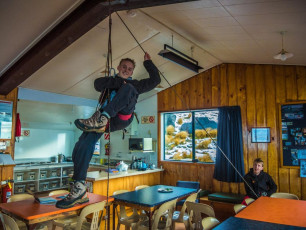
We were alone at the Lodge, so had plenty of room to practise roping up, prusiking, self-arrest body stance and harness and crampon installation. As we did this, outside the wind howled and sleet rattled. The first sign of an improvement was my Suunto registering a rise in barometric pressure. Then, in the early morning the wind dropped and the summit peeked through clearing cloud.
Looking good.
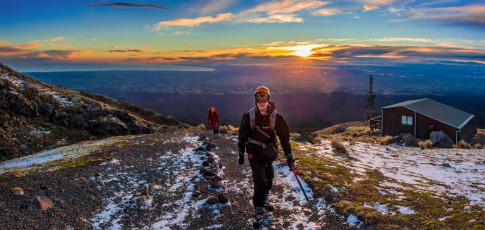
We set out at 8am as an orange sun broke through low clouds. The first couple of hundred metres were on rock and patchy snow, so I was keen that visibility was good for the boys as they became acquainted with those unfamiliar metal fangs strapped to their feet. They did well and we were soon at the bottom of the Lizard, spotting rime covered poles above.
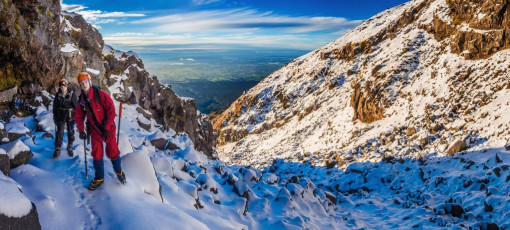
Below the staircase before the Lizard.
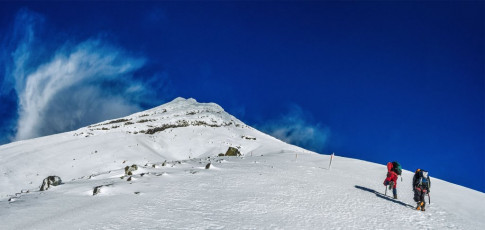
I’ve been up this standard route twice before in winter but, due to the thin conditions this time, the poles were much more prominent. Swirling cirrus fingers reaching out over the summit suggested that a nice easy-to-follow handrail on the descent would be reassuring. I assumed, wrongly as we soon discovered, that the poles marked the route I’d been up before over easy terrain into the summit crater. So off we went, smashing off ever larger rime chunks as we went, so the orange tipped poles were easier to spot on our descent.
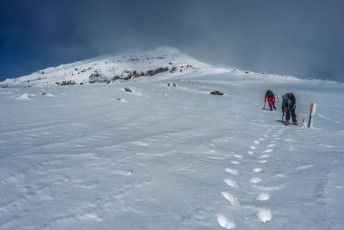
It wasn’t long before blue sky became white. We made steady progress free climbing and I was happy to let my teenagers do their share of step plugging. At about 2,200 metres, the gradient increased and the surface became less snow and more ice. Time to rope up and for Dad to lead.
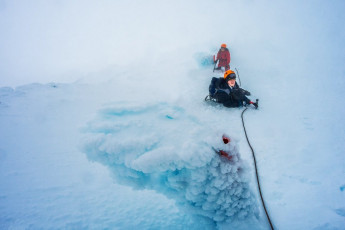
By now visibility was poor, so it took a while for it to dawn on me that the route we were following was unfamiliar to me and leading us into some much more exposed terrain than I’d expected. I found out later that we were on the summer route, which leads up into bluffs on the Shark’s Tooth side of the crater.
At 2,470 metres I reached a snowy shelf about a metre and half wide, with ice cliffs above and below. Then the snow squalls started. Ed and Will looked somewhat unenthused and I felt a heightened burden of responsibility. So I secured them both to the base of the final pole on the route, then went ahead up an exposed little section to see what lay ahead. Just over a rise I could see further shelving leading down on to the crater floor – we were near as damnit but, in the deteriorating conditions, we all agreed that going on was not a smart idea. In such poor viz it would also be rather pointless.

But in the clouds there turned out to be a silver lining – the boys had their first encounter with pitching as I belayed them down the steepest section just beneath our turnaround point. This also challenged me – I’m not experienced at dealing with three on a rope. It took longer than any of us would have liked to execute three pitches, but now the boys know what I mean by “type two fun”.
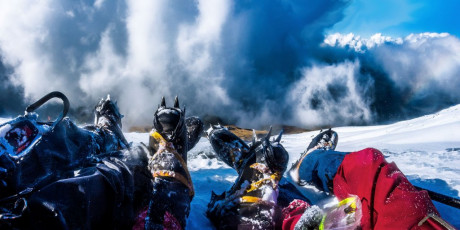
One factor in our favour was that it wasn’t actually that cold. During our entire time on the climb our drink bladder tubes never froze up.
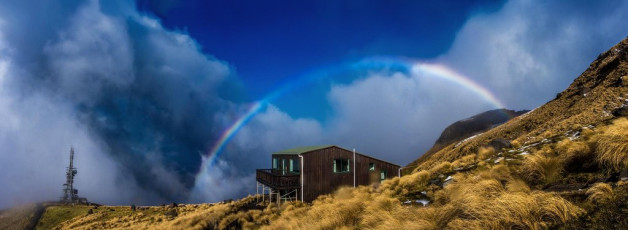
As the gradient eased again we quickened our descent, simil-climbing for a couple of hundred vertical metres, before shedding and packing the rope. We arrived back at the Lodge just as a big bright rainbow arched overhead. Our excursion had taken a little under seven hours – longer than anticipated, but still leaving just enough time to warm up, repack and drop the remaining 600 metres to the car before dark.
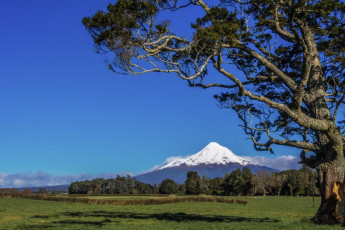
That evening type two joy kicked in as the boys tucked in to large steaks at the Black Harp in New Plymouth. We hadn’t summited, but we’d had a learning-rich day on a mountain in winter. I had to keep repeating this to myself as we drove south past the mountain next morning in perfect bluebird conditions. Tuesday would’ve been a cruisy summit day – too cruisy I reassured myself.









